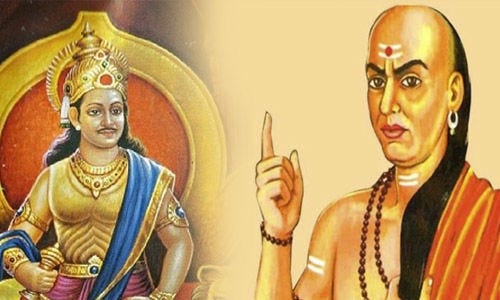Chandragupta Maurya, a name etched in the annals of Indian history, stands as the architect of the Mauryan Empire, the first pan-Indian empire that unified the subcontinent. His reign marked a pivotal moment, transforming the landscape of ancient India. Before his ascent, the region was a patchwork of fragmented kingdoms and warring states, constantly embroiled in conflict. This political fragmentation not only hindered progress but also left the region vulnerable to external threats. Chandragupta’s vision of a unified India was not merely a conquest but a necessity, a strategic imperative to ensure stability and prosperity. The importance of uniting the subcontinent lay in creating a cohesive political entity capable of harnessing its vast resources and potential, laying the foundation for a lasting civilization.
Early Life and Rise to Power
Chandragupta’s early life is shrouded in some mystery, but his mentorship under the astute Chanakya, also known as Kautilya, is a cornerstone of his success. Chanakya, a master strategist and political philosopher, recognized Chandragupta’s potential and groomed him for leadership. The Arthashastra, a treatise authored by Chanakya, served as a blueprint for Chandragupta’s strategies, outlining principles of statecraft, economics, and military tactics. This invaluable guide shaped Chandragupta’s approach to governance and conquest. The overthrow of the Nanda Dynasty, the ruling power at the time, was a testament to Chandragupta’s military prowess and Chanakya’s strategic genius. Through a series of well-planned campaigns, they dismantled the Nanda rule, paving the way for the establishment of the Mauryan Empire, a watershed moment in Indian history.
Strategies for Unification
Military Conquests
Chandragupta’s military campaigns were characterized by meticulous planning and execution. He commanded a well-organized and disciplined army, employing innovative tactics to subdue regional rulers. His campaigns were not just about territorial acquisition but about consolidating power and establishing a unified dominion. A significant achievement was the defeat of the Greek satraps left by Alexander the Great, effectively securing the northwestern borders and asserting Mauryan dominance.
Diplomacy and Alliances
Beyond military might, Chandragupta employed astute diplomacy to forge alliances with local rulers. He understood the importance of strategic partnerships and negotiated treaties, often cemented by marriage alliances, to secure loyalty and cooperation. These alliances were crucial in maintaining stability and expanding the empire’s influence. His diplomatic efforts extended to neighboring regions, ensuring peaceful relations and fostering trade.
Governance and Administration
The establishment of a centralized government was fundamental to Chandragupta’s unification strategy. He implemented an efficient administrative system, dividing the empire into provinces governed by Amatyas and Mahamatyas. These regional administrators were responsible for maintaining law and order, collecting taxes, and implementing policies inspired by the Arthashastra. This structured governance ensured uniformity and stability across the vast empire.
Economic Integration
Economic integration was another pillar of Chandragupta’s strategy. He developed trade routes and infrastructure, facilitating commerce and communication. The standardization of currency and taxation systems streamlined economic transactions and boosted revenue. He promoted agriculture and industries, ensuring a stable and prosperous economy that supported the unified empire.
Role of Chanakya (Kautilya)
Chanakya’s role in Chandragupta’s success cannot be overstated. His vision and strategic guidance were instrumental in shaping the Mauryan Empire. He contributed significantly to the administrative and military framework, providing insights into governance, diplomacy, and warfare. His understanding of statecraft and his ability to analyze political situations made him an invaluable advisor. Chanakya’s influence extended to every aspect of Chandragupta’s reign, ensuring its success and longevity.
Challenges and Overcoming Them
Chandragupta faced numerous challenges in his quest for unification. Resistance from regional rulers and foreign powers posed significant threats. Managing cultural and linguistic diversity across the vast subcontinent required a delicate balance of force and diplomacy. Consolidating power after military victories involved establishing effective administrative systems and ensuring the loyalty of conquered territories. He overcame these challenges through a combination of military prowess, strategic alliances, and effective governance.
Legacy and Impact
The establishment of the Mauryan Empire marked the first large-scale empire in Indian history, setting a precedent for future rulers. Chandragupta’s model of political unification influenced subsequent dynasties and shaped the course of Indian history. His administrative systems, economic policies, and diplomatic strategies left a lasting impact on governance, culture, and economics in the subcontinent. The Mauryan Empire’s legacy is evident in the enduring principles of statecraft and governance that continue to resonate in India.
Conclusion
Chandragupta Maurya’s achievements in unifying the fragmented kingdoms of ancient India were remarkable. His strategic brilliance, coupled with Chanakya’s guidance, created a powerful and prosperous empire. His unification strategies, encompassing military conquests, diplomacy, governance, and economic integration, laid the foundation for a cohesive and stable subcontinent. The significance of his leadership in shaping Indian history is undeniable. His enduring legacy serves as a testament to the power of vision, strategy, and effective governance, reminding us of the importance of unity and leadership in building a strong nation.



